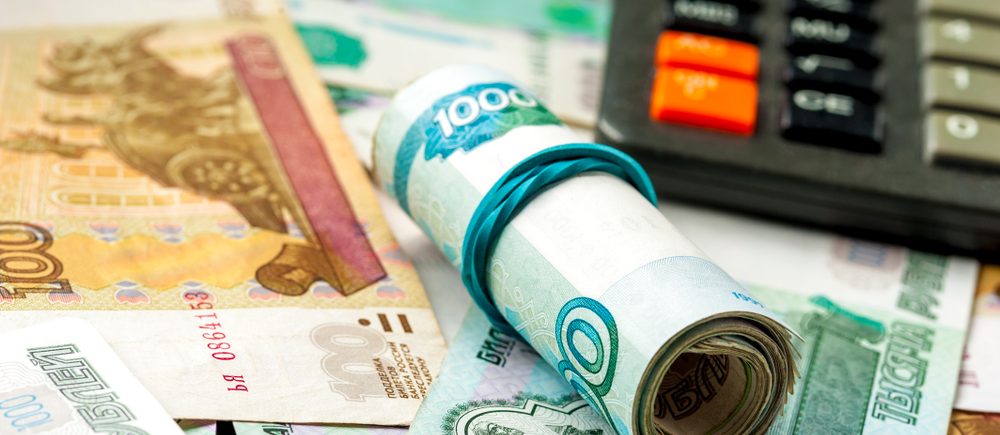If the Russian ruble is, against any practical scale, an indicator of the nation’s economic conditions, one can easily conclude that an initial storm has been caused by the West’s sanctions.
When the West reacted to Russia’s military operation in Ukraine with a bulk of financial and trade sanctions, the Russian ruble initially collapsed. At its base in March, the exchange rate was about 75 rubles to the US dollar to almost 150 to the dollar.
Since that low was recorded, the ruble has steadily trended stronger and is now trading at about 66 rubles to one dollar; strengthening to the point where the Russian central bank is now trying to weaken it by cutting its policy rate, which was nearly doubled to 20 per cent when the sanctions were first imposed, three times in recent weeks. The latest cut, from 14 per cent to 11 per cent, was decided last week.
Does the ruble’s rebound signal that the sanctions are not working? Russia was shocked when the West did something quite unprecedented and, amid a snowstorm of financial sanctions, froze its central bank’s foreign exchange reserves in March.
Russia reacted with the rate hike, capital controls to try to prevent migration of foreign currency held inside the country and ordered its companies with foreign exchange holdings and earnings offshore to repatriate 80 per cent of them. More recently Moscow ordered its European gas customers to pay for their gas in rubles.
In effect, Russia melodramatically limited selling of the currency and forced some buying to create something of an artificial, domestic market for the ruble rather than the internationally traded currency that it had previously been.
The sanctions hit Russia’s imports hard as well, though the surge in oil and gas prices the invasion sparked boosted its exports even supposing the wide-reaching effects of the financial sanctions cooled demand and forced Russia to offer big discounts to certain countries, including India and China, these countries are easily driven by the generous Russian incentive, and got attracted by the lower prices and not completely discouraged by the sanctions.
The ruble is increasingly being driven by Russia’s current account surplus from the combination of the increased value of its energy exports and the forced reduction in its imports.
The challenge for the Russian economic authorities, given the increased reliance on oil and gas revenues, which accounted for nearly half of government revenue even before the invasion, is that the ruble has recovered and strengthened quickly, which reduces the value of those revenues given that oil and gas sales and trading in the other commodities it exports are denominated in US dollars.
The European Union is trying to choke off those energy revenues. The EU held meetings to devise a compromise that would overcome the veto Hungary, which is highly dependent on Russian oil. Talks on energy sanctions have been stalled for nearly a month.
The latest proposal is to ban Russian oil delivered into Europe by tankers while allowing piped oil (Hungary gets its oil mainly via a pipeline) to continue to be supplied. There are some members of the EU who oppose that proposal because it would give Hungary cheaper oil than that available to neighbouring states. Even if the EU could find a consensus, the sanctions would not apply until the end of the year.
The focus is on oil rather than gas because oil generates twice as much revenue for the Russian government and most of the EU’s oil purchases are delivered by sea, whereas the gas is predominantly piped in.
It is easier to arrange and deliver alternative supplies of oil using existing infrastructure than to find a different source of gas and create the logistics to manage its importation and distribution. While the EU could take further time to reach an agreement, some significant limitation of European imports of Russian energy, estimated at nearly $US20 billion ($28 billion) a month, is probable.
The rebound in the ruble should be seen as a largely artificial construct. Beneath the surface, the sanctions and the West’s disgust at the invasion and the methods Russia has been using to prosecute it are slowly intensifying.
Deprived of Western technology and expertise, even Russia’s oil production volumes are falling. The domestic fleet of planes in Russia is shrinking because it does not have access to parts or servicing expertise and is being forced to cannibalize the fleet for parts. Some observers believe that even with no EU ban on Russia’s oil, Russia’s economy and its standards of living are destined to progressively deteriorate.
The Russian auto industry has been wiped out by the exodus of foreign manufacturers. The reliability of telecommunications is eroding by the bans on technology and components. The sector is further hurt by the lack of access to semiconductors.
Russia’s ability to replace the tanks and weapons lost in Ukraine is threatened. The long-term consequences for the Russian population are going to be painful. Russia’s overall industrial base is shrinking on the same background of shortages even as the unwillingness of Western companies to deal with Moscow affects more straightforward goods, while foods, clothes and furniture are not exceptions. There were shortages of food and goods and Russia, for long, has been reliant on poor-quality and technically inferior domestically produced items.

Russia
 Noor Trends News, Technical Analysis, Educational Tools and Recommendations
Noor Trends News, Technical Analysis, Educational Tools and Recommendations




